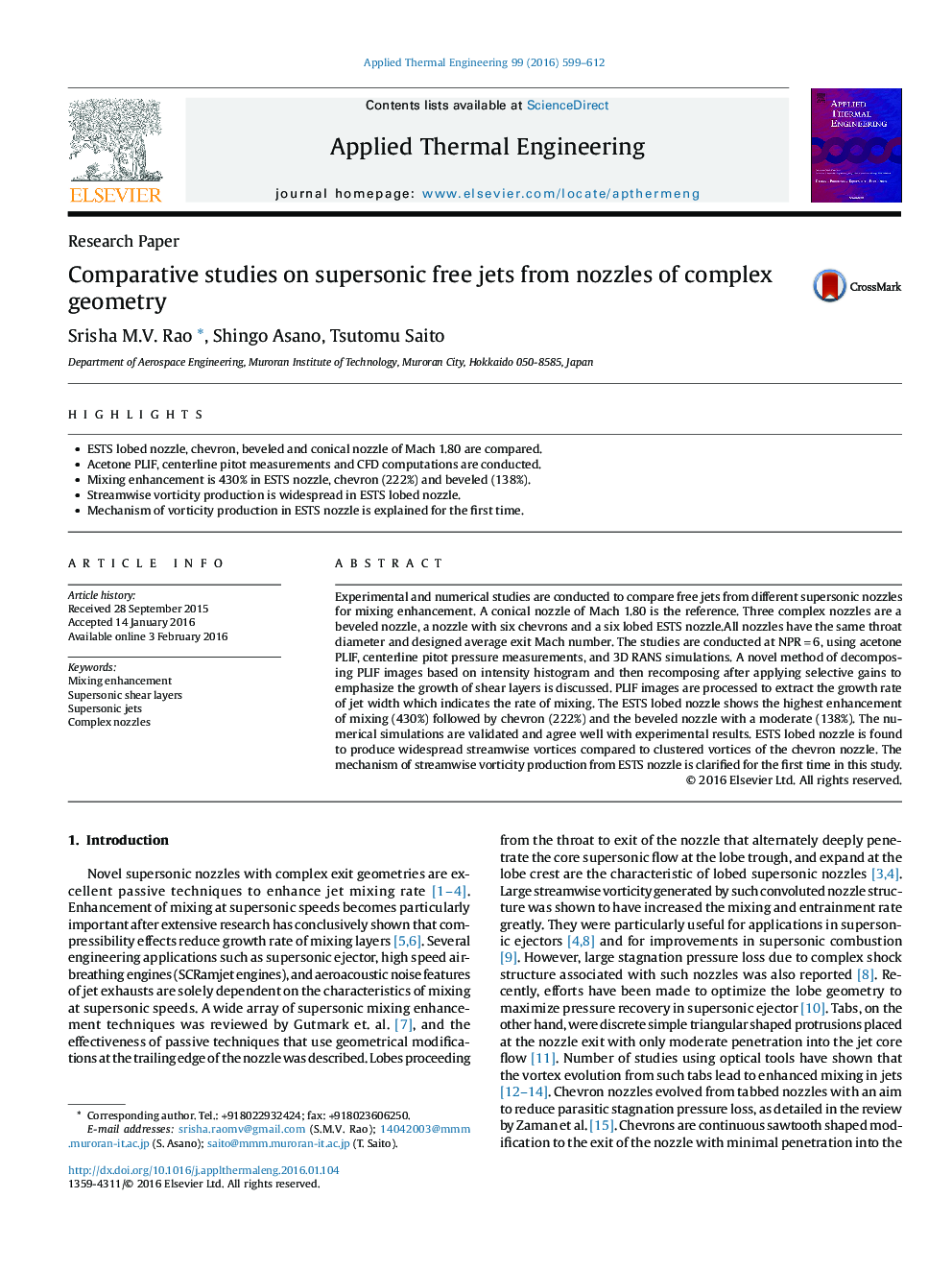| Article ID | Journal | Published Year | Pages | File Type |
|---|---|---|---|---|
| 644715 | Applied Thermal Engineering | 2016 | 14 Pages |
•ESTS lobed nozzle, chevron, beveled and conical nozzle of Mach 1.80 are compared.•Acetone PLIF, centerline pitot measurements and CFD computations are conducted.•Mixing enhancement is 430% in ESTS nozzle, chevron (222%) and beveled (138%).•Streamwise vorticity production is widespread in ESTS lobed nozzle.•Mechanism of vorticity production in ESTS nozzle is explained for the first time.
Experimental and numerical studies are conducted to compare free jets from different supersonic nozzles for mixing enhancement. A conical nozzle of Mach 1.80 is the reference. Three complex nozzles are a beveled nozzle, a nozzle with six chevrons and a six lobed ESTS nozzle.All nozzles have the same throat diameter and designed average exit Mach number. The studies are conducted at NPR = 6, using acetone PLIF, centerline pitot pressure measurements, and 3D RANS simulations. A novel method of decomposing PLIF images based on intensity histogram and then recomposing after applying selective gains to emphasize the growth of shear layers is discussed. PLIF images are processed to extract the growth rate of jet width which indicates the rate of mixing. The ESTS lobed nozzle shows the highest enhancement of mixing (430%) followed by chevron (222%) and the beveled nozzle with a moderate (138%). The numerical simulations are validated and agree well with experimental results. ESTS lobed nozzle is found to produce widespread streamwise vortices compared to clustered vortices of the chevron nozzle. The mechanism of streamwise vorticity production from ESTS nozzle is clarified for the first time in this study.
